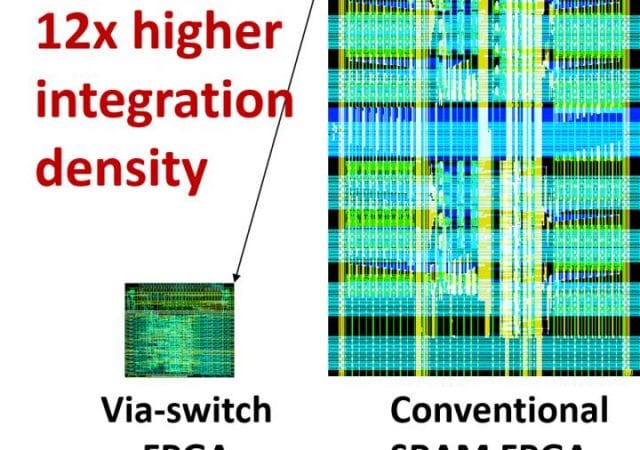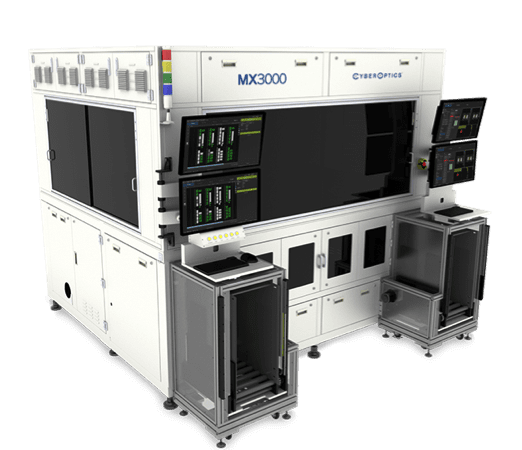SkyWater Technology, the innovator’s trusted foundry partner, and Applied Novel Devices Inc, a designer, developer and supplier of novel semiconductor device technologies (“AND”), today announced the companies have entered into a licensing and manufacturing agreement to offer an improved standard process flow for Si power MOSFETs (metal oxide semiconductor field-effect transistors).
Si2 Compact Model Coalition to Support CEA-Leti SPICE Simulation Model
The Si2 Compact Model Coalition has announced the approval and financial support of L-UTSOI, a new ultra-thin, silicon-on-insulator transistor simulation model developed by CEA-Leti, a France-based research institute for electronics and information technologies. L-UTSOI was selected for support by CMC, a coalition of 30 semiconductor companies that standardizes semiconductor models used in a class of circuit simulation tools called SPICE, or Simulation Program with Integration Circuit Emphasis.
A Flexible Brain for AI
Researchers at Osaka Univ. fabricate an energy efficient reconfigurable computing engine that can be rewired to optimize its performance for artificial intelligence tasks. This work may lead to inexpensive and eco-friendly custom machine learning hardware.
Groovy Key to Nanotubes in 2D
Ultrathin carbon nanotubes crystals could have wonderous uses, like converting waste heat into electricity with near-perfect efficiency, and Rice University engineers have taken a big step toward that goal. The latest step continues a story that began in 2013, when Rice’s Junichiro Kono and his students discovered a breakthrough method for making carbon nanotubes line up in thin films on a filter membrane.
IKBFU Physicists Keep Improving ‘Smart’ Composites for Biomedical Sensors
IKBFU Physicists have successfully tested the new magnetic micro wire-based concept of “smart” composites production. The new composites are related to the multiferroic-class materials which have mutually controlled magnetic and electric properties. The effects observed in the compositions are considered to be a perspective platform for creating new devices from energy converters to highly sensitive sensors.
Due to Concerns Over Coronavirus (COVID-19) Outbreak, the 2020 IEEE International Reliability Physics Symposium Will Be Presented Online as a Virtual Conference
Due to concerns over the global coronavirus (COVID-19) outbreak, the management committee and board of directors of the 2020 IEEE International Reliability Physics Symposium (IRPS), the industry’s premier technical conference for engineers and scientists to present the latest original research in microelectronics reliability, has decided to hold IRPS 2020 as a virtual conference.
CyberOptics Launches 3D MX3000 Final Vision Inspection (FVI) System for Memory Modules
CyberOptics Corporation (NASDAQ: CYBE), a global developer and manufacturer of high-precision 3D sensing technology solutions, launches the Multi-Reflection Suppression (MRS)-enabled 3D MX3000 Final Vision Inspection (FVI) system for memory modules. The launch extends the memory module inspection system portfolio from 2D to 3D.
Western Digital Announces Appointment of David Goeckeler as Chief Executive Officer
Western Digital Corp. (NASDAQ: WDC) today announced that David Goeckeler has been appointed chief executive officer and a member of the Western Digital Board of Directors (“the Board”), effective March 9, 2020. Mr. Goeckeler currently serves as executive vice president and general manager of Cisco’s $34 billion Networking and Security Business. Mr. Goeckeler succeeds Steve Milligan, who previously announced his intended retirement.
New Study Presents Stretchable and Colorless Solar Cells, Using Si Microwire Composites
A research team, led by Professor Kyoung Jin Choi in the School of Materials Science and Engineering at UNIST has introduced a flexible and transparent solar cell, using silicon microwire composites. The new solar cell takes a structure in which cylindrical silicon rods are embedded in a flexible and transparent polymer material. As the visible lights passes between polymer materials without silicon rods, it appears entirely transparent to the human eye. It is also designed to control the sunlight reflected from the silicon rods, thereby increasing efficiency.
The Ink of the Future in Printed Electronics
A research group led by Simone Fabiano at the Laboratory of Organic Electronics, Linköping University, has created an organic material with superb conductivity that doesn’t need to be doped. They have achieved this by mixing two polymers with different properties. In order to increase the conductivity of polymers, and in this way obtain higher efficiency in organic solar cells, light-emitting diodes and other bioelectronic applications, researchers have until now doped the material with various substances.

